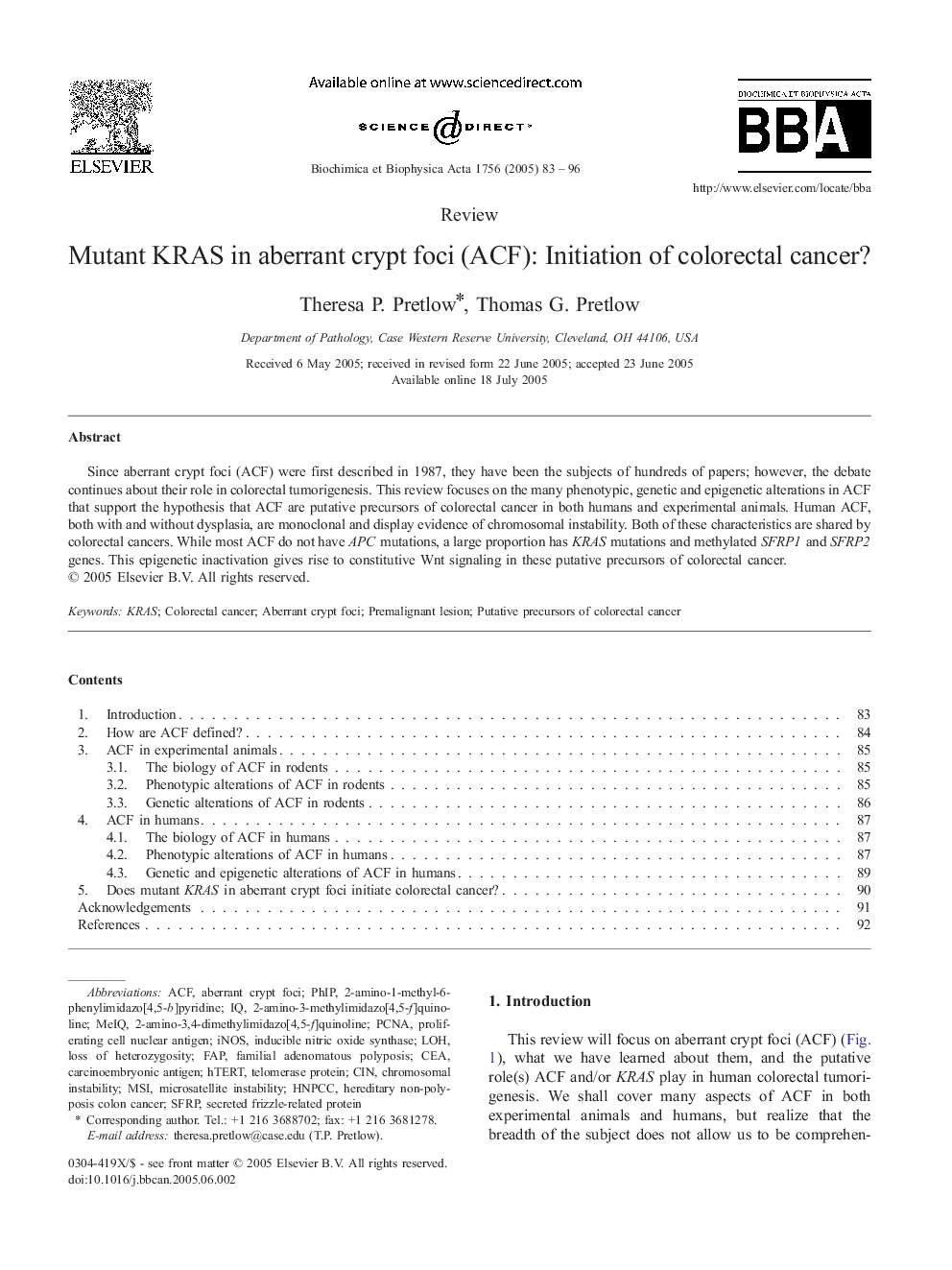| Article ID | Journal | Published Year | Pages | File Type |
|---|---|---|---|---|
| 9904036 | Biochimica et Biophysica Acta (BBA) - Reviews on Cancer | 2005 | 14 Pages |
Abstract
Since aberrant crypt foci (ACF) were first described in 1987, they have been the subjects of hundreds of papers; however, the debate continues about their role in colorectal tumorigenesis. This review focuses on the many phenotypic, genetic and epigenetic alterations in ACF that support the hypothesis that ACF are putative precursors of colorectal cancer in both humans and experimental animals. Human ACF, both with and without dysplasia, are monoclonal and display evidence of chromosomal instability. Both of these characteristics are shared by colorectal cancers. While most ACF do not have APC mutations, a large proportion has KRAS mutations and methylated SFRP1 and SFRP2 genes. This epigenetic inactivation gives rise to constitutive Wnt signaling in these putative precursors of colorectal cancer.
Keywords
PCNAKRASACFiNOSsFRPPhIPFAPMeIQMSIHNPCC2-amino-1-methyl-6-phenylimidazo[4,5-b]pyridine2-amino-3-methylimidazo[4,5-f]quinoline2-amino-3,4-dimethylimidazo[4,5-f]quinolineCeAhTERTcarcinoembryonic antigenProliferating Cell Nuclear Antigenloss of heterozygosityMicrosatellite instabilityChromosomal instabilityCinColorectal cancerhereditary non-polyposis colon cancerinducible nitric oxide synthasePremalignant lesionaberrant crypt fociLOHfamilial adenomatous polyposis
Related Topics
Life Sciences
Biochemistry, Genetics and Molecular Biology
Cancer Research
Authors
Theresa P. Pretlow, Thomas G. Pretlow,
